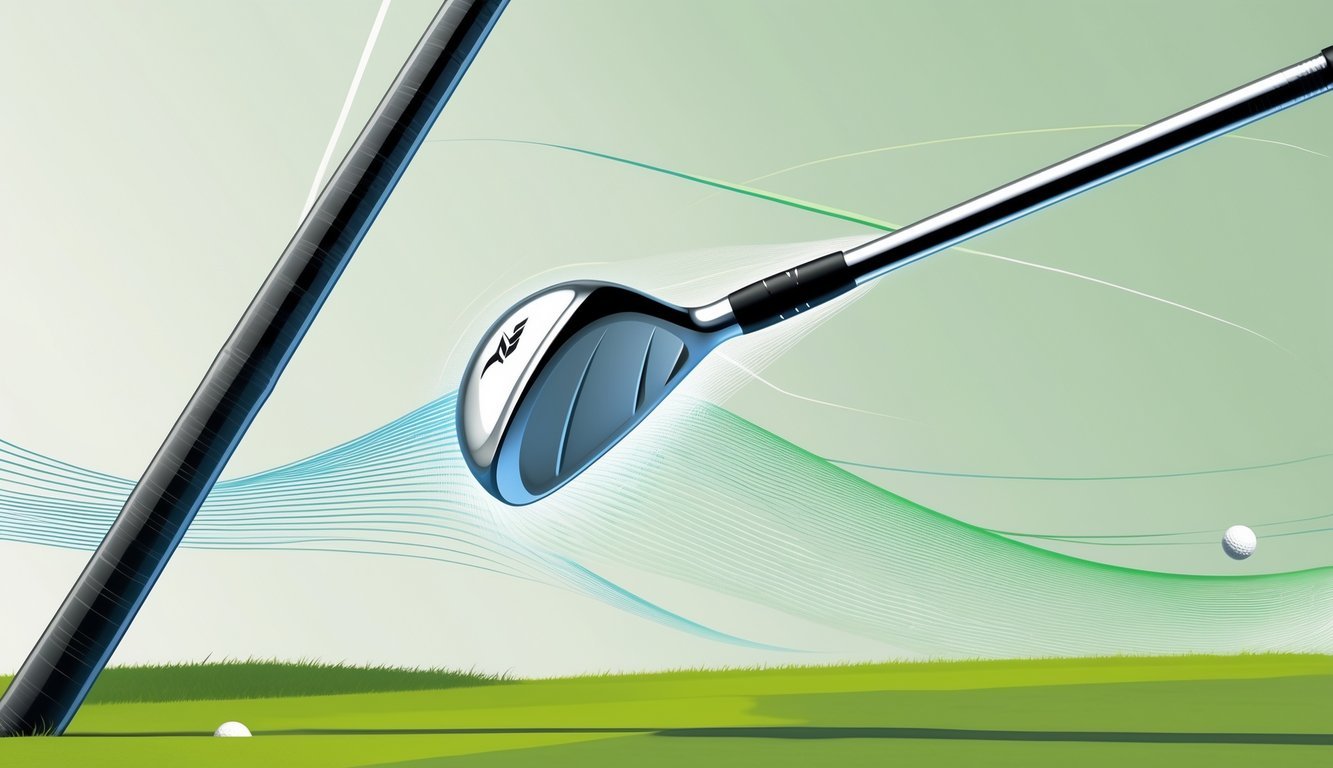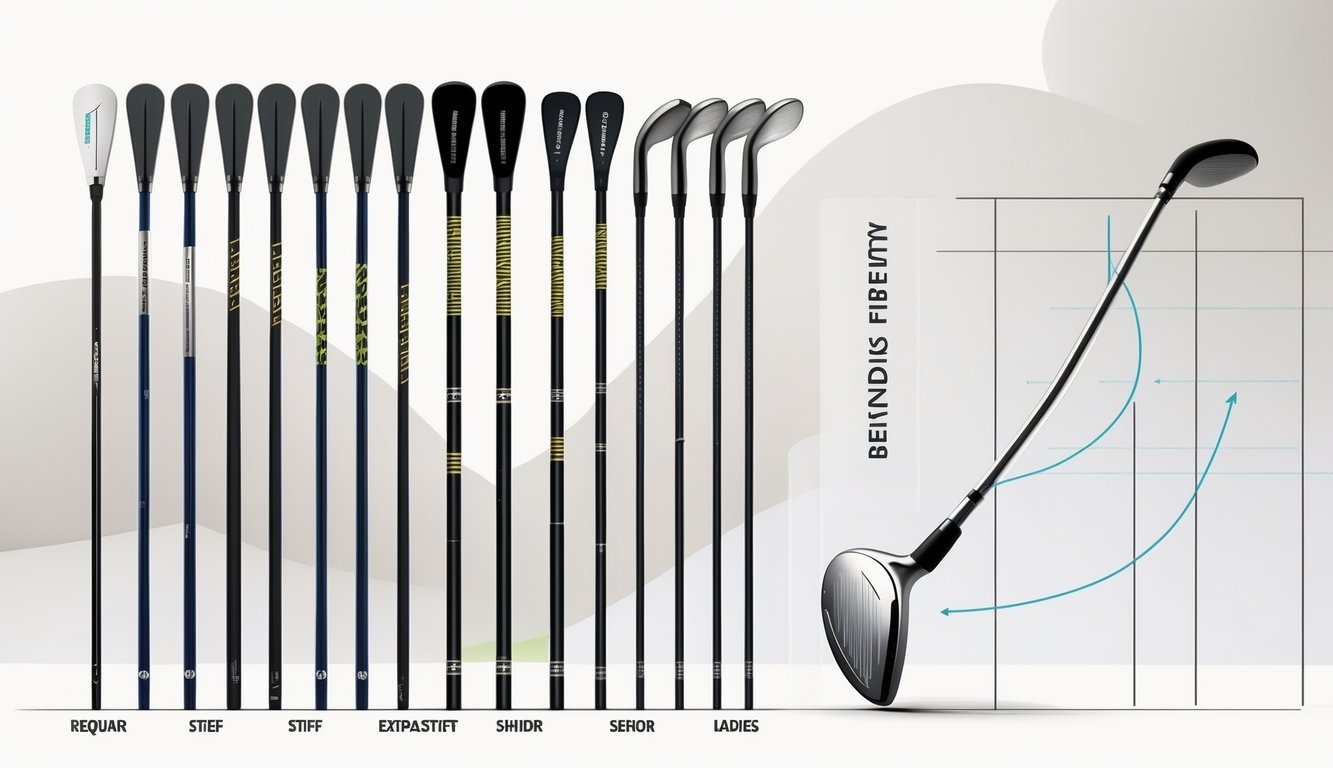Physical Address
304 North Cardinal St.
Dorchester Center, MA 02124
Physical Address
304 North Cardinal St.
Dorchester Center, MA 02124
Choosing the right golf shaft flex enhances club performance by matching it to swing speed, impacting ball flight, accuracy, and overall distance.

Picking the right golf shaft flex can totally change how your clubs feel and perform. Shaft flex just means how much the shaft bends while you swing, and matching it to your swing speed usually helps you hit more consistent shots. If your shaft is too stiff or too soft, you’ll probably notice issues with your ball flight, accuracy, or distance.
Different flex options work for all kinds of players, from total beginners to seasoned pros.
If you know your swing speed and understand how flex changes your strike, you’ll have a much easier time picking a shaft that fits your game.
This guide will break down what shaft flex is, why it matters, and how to choose the right one for you.

How your golf shaft bends actually changes how your club feels and performs.
The right flex lines up with your swing speed and style, so you get better accuracy and distance.
Are you tired of spinning your wheels and getting nowhere? Simply put, you’re out of sync: you’re out of alignment with your astral configuration.
But: there’s a kind of map that can help you reclaim your alignment. Think of it as your own personal blueprint to success and happiness: a blueprint that will help you live your most amazing life.
Get started here.
If you understand the different flex options and what influences your choice, you can really improve your game.
Golf shaft flex is just how much the shaft bends during your swing and at impact.
It controls how stiff or flexible the shaft feels.
A softer shaft bends a lot, while a stiff one barely moves.
This bending affects clubhead speed and the club’s path through the ball.
Flex matters because it changes your timing and control.
If your shaft is too stiff or too soft for your swing, you might start missing shots or losing distance.
The right flex lets you make solid, consistent contact by matching your unique swing speed and tempo.
Golf shafts come in a few common flex options:
Choosing between these depends mostly on your swing speed and how firm you want your golf club to feel.
Your clubhead speed and swing tempo matter a lot in picking the right flex.
A few things help you figure out the best shaft flex.
Swing speed is huge—faster swings usually need stiffer shafts for control.
Slower swings do better with more flexible shafts to get the most distance.
Your own preferences count, too.
Some folks love the feel of a stiffer shaft for extra control, while others go for a softer one for easier timing.
How smooth or aggressive your swing is also plays a part in what flex feels right.
Shaft length and any trimming after you buy can change how flexible the shaft feels.
So, the same shaft model might feel different after a few tweaks.
Testing out different shafts with a pro can really help you find your best fit.

Your golf shaft flex touches a lot of parts of your game.
It changes your distance, your control, and even how the club feels at impact.
If you pick the right flex, you’ll hit straighter shots and usually get better distance and feel.
Shaft flex controls how much the shaft bends as you swing.
If your shaft’s too stiff, it won’t bend enough, so your ball flies lower and often goes right (if you’re right-handed).
If your shaft is too flexible, it bends too much, so the ball goes higher with less control—sometimes you’ll even hook it.
Your ball’s launch angle, spin rate, and direction all connect to shaft flex.
The right flex gives you a nice balance of carry distance and accuracy.
A lot of senior or amateur players need more flexible shafts to get better ball flight and distance.
The flex of your shaft totally changes how the club feels when you hit the ball.
A stiffer shaft gives you more control but less feedback, since it barely bends.
A flexible shaft feels like it “whips” through impact, which can feel smoother but sometimes less consistent.
You’ll feel differences in contact quality.
The right flex lets you feel where you hit the ball on the clubface, which helps you adjust your swing and get more consistent.
The material of the shaft matters, too. Graphite shafts are lighter and usually more flexible, which helps you swing faster.
They’re popular for drivers, hybrids, and for players who want a lighter shaft, like women and seniors.
Steel shafts are heavier and usually stiffer, giving you more control and a solid feel—especially in irons.
Some players prefer steel because it helps reduce twisting.
What you pick depends on your swing speed, strength, and the type of club.
Matching your swing speed and style to the right shaft flex is crucial.
If you swing slowly, a more flexible shaft helps you get more distance and launch.
If you swing fast, a stiffer shaft keeps the ball on line and gives you more control.
Working with a club fitter and using tools like a launch monitor can really help you dial in your ideal flex.
These tools measure your swing speed, ball flight, and impact data to pick the right flex and material.
It can make a noticeable difference in your consistency and accuracy.

If you get how your swing speed and playing style affect shaft flex, you’ll have a much easier time picking the right golf shaft.
The right flex changes your ball flight, control, and distance.
Swing speed is the main thing.
Faster swings usually need stiffer shafts, while slower swings work better with more flexible ones.
You can measure your swing speed or just ask a pro to help you out.
The right flex lets you hit the ball more accurately.
You’ll also get better spin and launch angle, which means more control and consistent shots.
An A flex shaft is more flexible than a regular (sometimes called “stiff”) flex.
A flex shafts work well for slower swing speeds because they bend more during the swing.
Regular flex shafts are better for moderate to faster swing speeds.
Shaft flex changes how the club head moves during your swing.
If it’s too flexible, you lose control.
If it’s too stiff, you lose distance.
The right flex lets your club head deliver the best speed and accuracy.
Definitely look at your swing speed, but also think about how you want the ball to fly.
Too flexible and the ball might fly too high and lose distance.
Make sure the flex matches your strength and swing tempo.
Yeah, you’ll find charts out there that link swing speed to shaft flex.
Slower swing speeds usually go best with A or senior flex.
If you swing at a medium speed, regular flex tends to work well.
Fast swingers? They often need stiff or even extra stiff shafts.
These charts give you a decent starting point, but honestly, it’s not always one-size-fits-all.